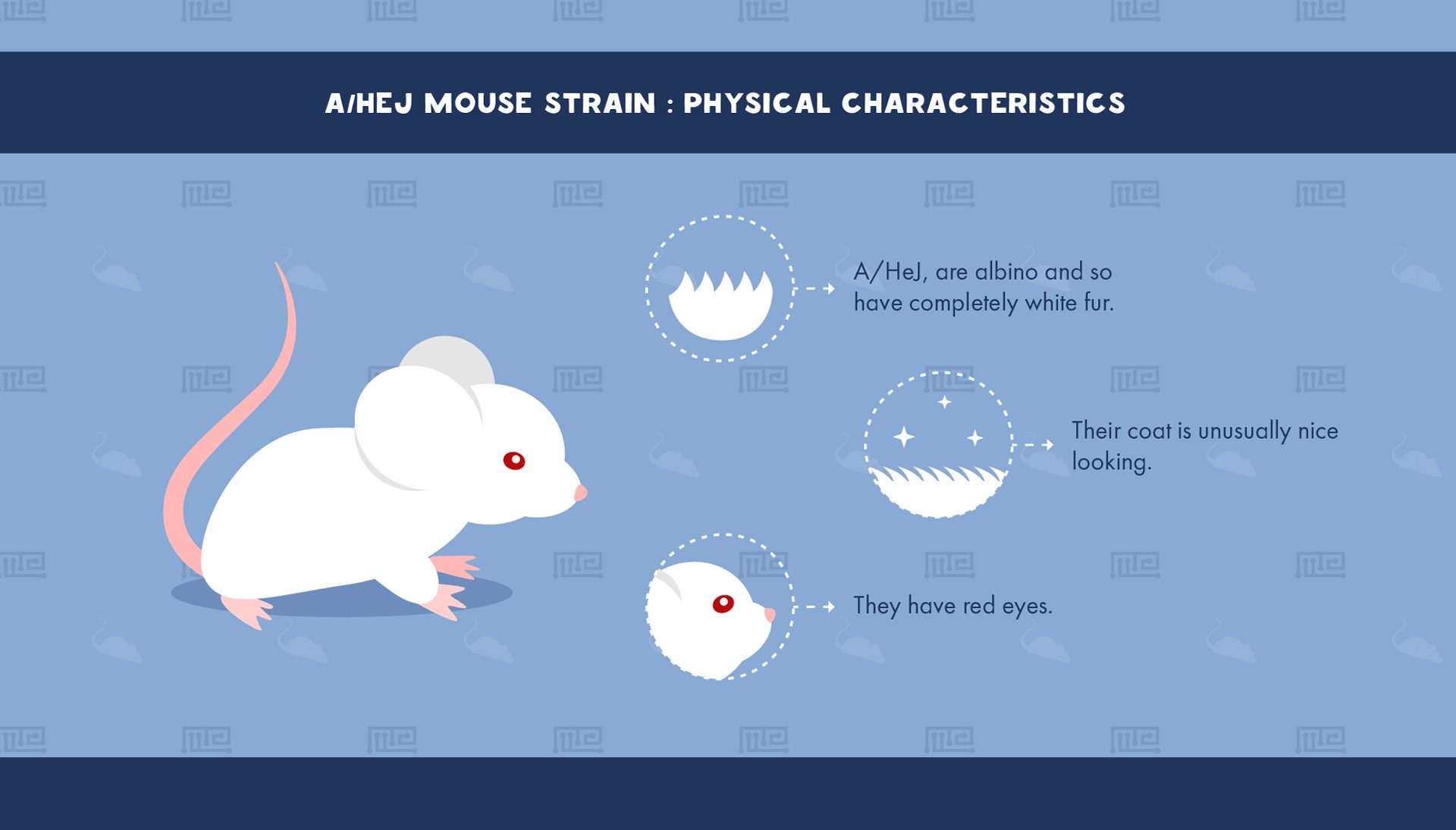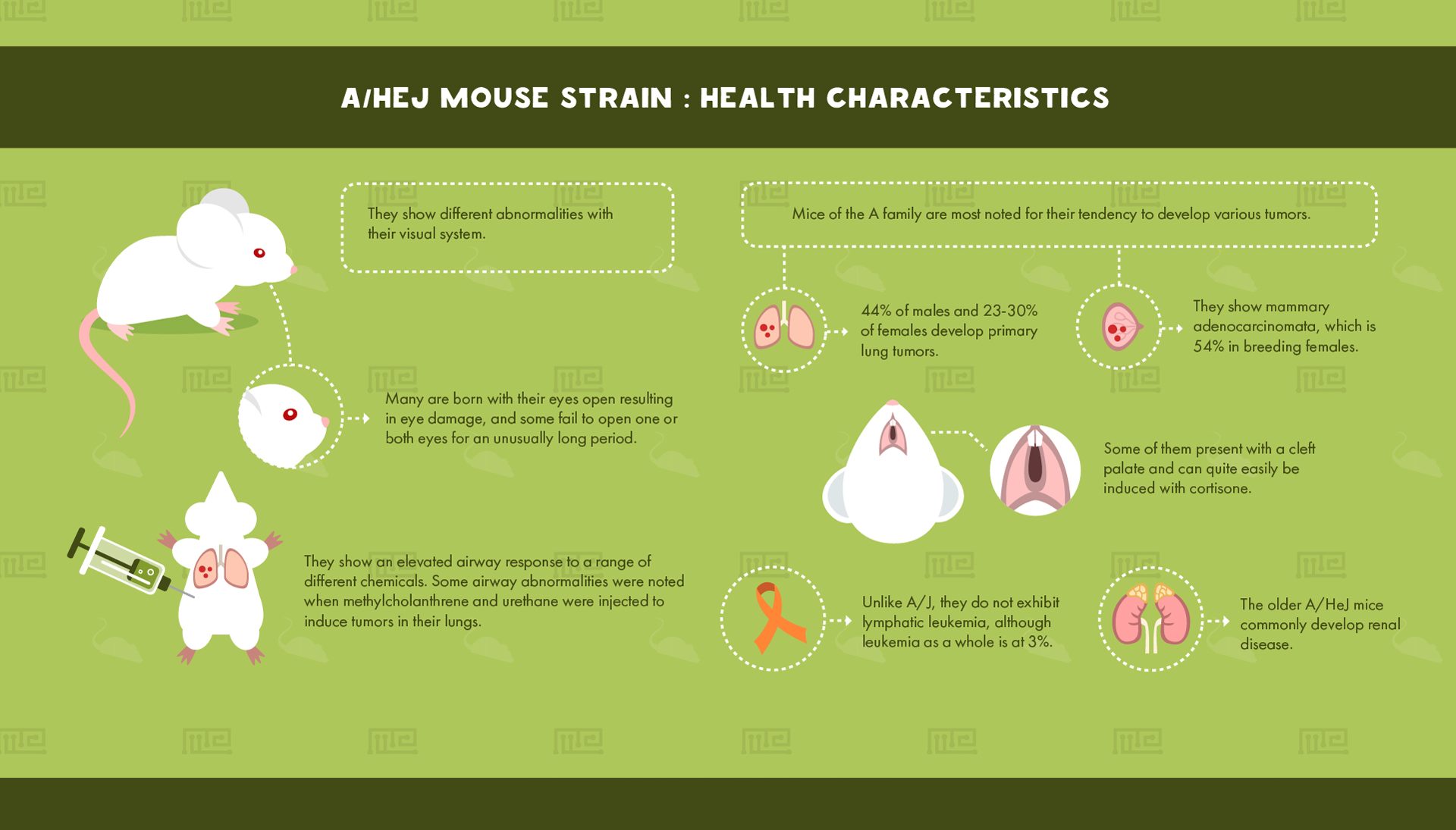Overview
A/HeJ, also known as A Heston is an inbred strain of mouse in the same family as the A/J strain. It is susceptible to developing a range of different tumors.[1]
Physical Characteristics
A/HeJ, like all mice in the A family of strains, are albino and so have completely white fur and red eyes. Their coat is unusually nice looking according to the Jackson Laboratory handbook.[3]
Behavioral Characteristics & Handling
The Jackson Laboratory’s handbook is very positive about handling A/HeJ, claiming that these mice are very quiet, docile and “very easy to work with”. They are described as shy but also display some curiosity.[3] Overall, even though it seems this strain shows elevated anxiety, it is generally easy to handle. Researchers should thus have confidence in its ease of use.
One study used a Go/No Go task to examine the impulsivity of various mouse strains and found that A/HeJ was less impulsive than most of the other strains (including CBA/J, C3H/HeJ and DBA/2J). A/HeJ also showed low locomotor activity in the open field and very low sucrose preference. Both of these results suggest that this strain has a depression-like phenotype.[4]
Health Characteristics
Mice of the A family are most noted for their tendency to develop various tumors. Primary lung tumors are seen in the A/HeJ strain in 44% of males and 23-30% of females. Unlike A/J, they do not exhibit lymphatic leukemia, although leukemia as a whole is at 3%. They do show mammary adenocarcinomata, which is at 54% in breeding females.[2][3]
These mice also show an elevated airway response to a range of different chemicals. Some airway abnormalities were noted when methylcholanthrene and urethane were injected to induce tumors in their lungs. A cleft palate is found in some individuals, and can quite easily be induced with cortisone.[3]
A third cluster of aberrations is seen with their visual system. Many are born with their eyes open resulting in eye damage, and some fail to open one or both eyes for an unusually long period. Finally, older A/HeJ mice commonly develop renal disease.[3]
Major Experimental Uses
A/HeJ is most frequently used for cancer research, including the study of mammary tumors, lung tumors, and adenomas. They can also be applied to research on facial defects, lymphoid defects, developmental biology, and immunology.[1]
References
- 000645 – A/HeJ. 2018. 000645 – A/HeJ. [ONLINE] Available at: https://www.jax.org/strain/000645. [Accessed 12 December 2018].
- MGI – Inbred Strains: A. 2018. MGI – Inbred Strains: A. [ONLINE] Available at: http://www.informatics.jax.org/inbred_strains/mouse/docs/A.shtml. [Accessed 12 December 2018].
- The Jackson Laboratory Handbook on Genetically Standardized Mice. 6th ed. 2009. [ONLINE]. Available at: http://jackson.jax.org/rs/444-BUH-304/images/JAX%20Handbook%20Genetically%20Standardized%20Mice.pdf.
- Gubner, N. R., Wilhelm, C. J., Phillips, T. J., & Mitchell, S. H. 2010. Strain differences in behavioral inhibition in a Go/No-go task demonstrated using 15 inbred mouse strains. Alcoholism, clinical and experimental research, 34(8), 1353-62.


